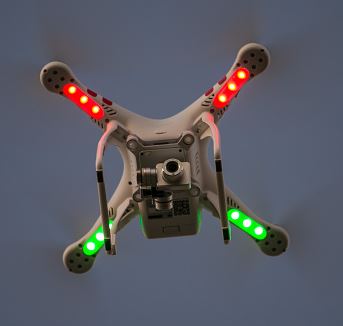
Many of you will unwrap a Christmas present in a few days and find a shiny new drone inside. Touted as being one of the most popular gifts this holiday season, drones will also turn many of you into overnight pilots. And while the Federal Aviation Administration (FAA) hasn’t “officially” declared any laws for flying a drone, they want you to know a thing or two before you take flight.
After teaming up with leading unmanned aircraft systems and hobbyist groups, the FAA is now sponsoring a “Know Before You Fly” campaign. The initiative targets prospective drone operators and offers guidance on how to fly safely. These guidelines may not be laws (yet) but instead explain the FAA’s existing laws on unmanned aircraft systems (UAS) and how they apply to drones.
If you’re confused about what you can and can’t do with your drone, here’s what you need to know:
For Recreational Users
Most drone pilots will be categorized as recreational users and must adhere to the Special Rule for Model Aircraft. This includes anyone who wants to use a drone for personal reasons like capturing photographs, recording video, or just flying for fun. Currently, any small unmanned aircraft (sUAS) is allowed to be flown for recreational purposes as long as it follows these rules:
- Follow community-based safety guidelines, as developed by organizations such as the Academy of Model Aeronautics (AMA).
- Fly no higher than 400 feet and remain below any surrounding obstacles when possible.
- Keep your sUAS in eyesight at all times, and use an observer to assist if needed.
- Remain well clear of and do not interfere with manned aircraft operations, and you must see and avoid other aircraft and obstacles at all times.
- Do not intentionally fly over unprotected persons or moving vehicles, and remain at least 25 feet away from individuals and vulnerable property.
- Contact the airport or control tower before flying within five miles of an airport.
- Do not fly in adverse weather conditions such as in high winds or reduced visibility.
- Do not fly under the influence of alcohol or drugs.
- Ensure the operating environment is safe and that the operator is competent and proficient in the operation of the sUAS.
- Do not fly near or over sensitive infrastructure or property such as power stations, water treatment facilities, correctional facilities, heavily traveled roadways, government facilities, etc.
- Do not conduct surveillance or photograph persons in areas where there is an expectation of privacy without the individual’s permission (see AMA’s privacy policy).
For Business Users
Any time you make money from your drone it is classified as “business use.” And while the FAA does allow UAS for commercial purposes, they handle these requests on a case-by-case basis. Therefore, it’s imperative you check with the FAA before you start charging money for your drone services.
What is a commercial use of UAS?
Any commercial use in connection with a business, including:
- Selling photos or videos taken from a UAS
- Using UAS to provide contract services, such as industrial equipment or factory inspection
- Using UAS to provide professional services, such as security or telecommunications
What are some examples of commercial uses of UAS?
- Professional real estate or wedding photography
- Professional cinema photography for a film or television production
- Providing contract services for mapping or land surveys
For Public Entities
Universities, law enforcement, fire departments, or any other government agency are allowed to operate drones but must first apply for a Certificate of Waiver or Authorization (COA). Failure to do so will result in being unable to operate sUAS in public aircraft operations.
Who can obtain a COA to operate public aircraft?
- Only government entities—such as federal and state government agencies, law enforcement agencies and public colleges and universities—can receive a COA for public UAS aircraft operations.
- Public aircraft operations must be conducted for a governmental function.
- COAs are most commonly issued to public (government) entities, but are also required for civil (private) operations.
- The FAA thoroughly evaluates each COA application to determine the safety of the proposal.
- COAs are issued for a specific period of time, usually two years, and include special provisions unique to each proposal, such as a defined block of airspace and time of day sUAS can be used.
How can I apply for a COA?
- Visit the FAA website for information on how to apply for a COA online.
- A sample application can be viewed here.
- Since 2009, the FAA has taken steps to streamline the application process by transitioning online.
- The average COA processing time is less than 60 days.
- Expedited authorization is available in emergency and life-threatening situations.
Know Before You Fly
There are many misconceptions about the FAA and how much control they actually have over drone regulation. And while some of the rules may be confusing, there is no gray area regarding FAA regulations on aircraft – manned or unmanned.
Before you go out on Christmas morning and have fun with your drone, visit the Know Before You Fly website and make sure what you’re doing is safe. After all, you wouldn’t want to shoot your eye out would you?

